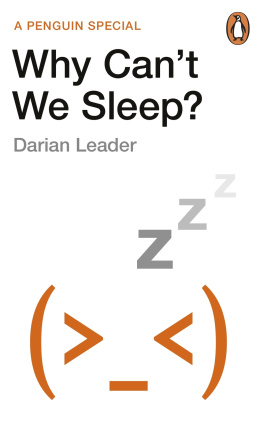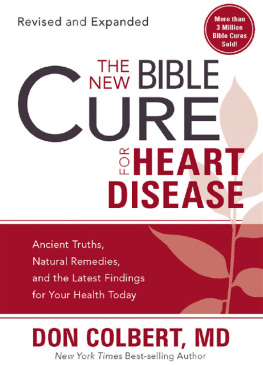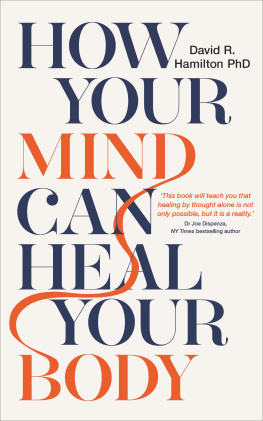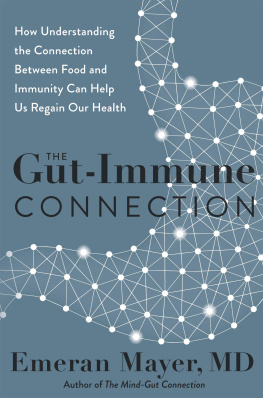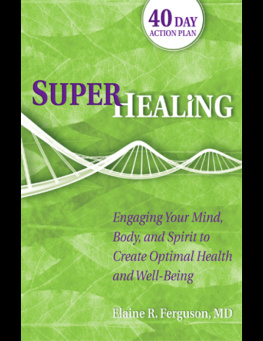PENGUIN BOOKS
WHY DO PEOPLE GET ILL?
Darian Leader is a psychoanalyst practising in London and a member of the Centre for Freudian Analysis and Research and of the College of Psychoanalysts UK. He is the author of Why Do Women Write More Letters Than They Post?, Promises Lovers Make When It Gets Late, Freuds Footnotes and Stealing the Mona Lisa.
David Corfield is a researcher in the Department of Biological Cybernetics at the Max Planck Institute and has been lecturer in the history and philosophy of science at the universities of Cambridge and Oxford. He is the author of Towards a Philosophy of Real Mathematics and editor of Foundations of Bayesianism.
By the same authors
Darian Leader:
Introducing Lacan (with Judy Groves)
Why Do Women Write More Letters Than They Post?
Promises Lovers Make When It Gets Late
Freuds Footnotes
Stealing the Mona Lisa: What Art Stops Us from Seeing
David Corfield:
Towards a Philosophy of Real Mathematics
Foundations of Bayesianism (edited with Jon Williamson)
Why Do
People Get Ill?
DARIAN LEADER AND
DAVID CORFIELD

PENGUIN BOOKS
PENGUIN BOOKS
Published by the Penguin Group
Penguin Books Ltd, 80 Strand, London WC2R 0RL , England
Penguin Group (USA) Inc., 375 Hudson Street, New York, New York 10014, USA
Penguin Group (Canada), 90 Eglinton Avenue East, Suite 700, Toronto, Ontario, Canada M4P 2Y3
(a division of Pearson Penguin Canada Inc.)
Penguin Ireland, 25 St Stephens Green, Dublin 2, Ireland (a division of Penguin Books Ltd)
Penguin Group (Australia), 250 Camberwell Road, Camberwell, Victoria 3124, Australia
(a division of Pearson Australia Group Pty Ltd)
Penguin Books India Pvt Ltd, 11 Community Centre, Panchsheel Park, New Delhi 110 017, India
Penguin Group (NZ), 67 Apollo Drive, Rosedale, North Shore 0632, New Zealand
(a division of Pearson New Zealand Ltd)
Penguin Books (South Africa) (Pty) Ltd, 24 Sturdee Avenue, Rosebank, Johannesburg 2196, South Africa
Penguin Books Ltd, Registered Offices: 80 Strand, London WC2R 0RL , England
www.penguin.com
First published by Hamish Hamilton 2007
Published in Penguin Books 2008
1
Copyright Darian Leader and David Corfield, 2007
All rights reserved
The moral right of the author has been asserted
Except in the United States of America, this book is sold subject
to the condition that it shall not, by way of trade or otherwise, be lent,
re-sold, hired out, or otherwise circulated without the publishers
prior consent in any form of binding or cover other than that in
which it is published and without a similar condition including this
condition being imposed on the subsequent purchaser
978-0-14-191707-8
For Ed
Contents
Introduction
If two men of the same age have heart attacks resulting in equal damage to their hearts, why is the man who is single and depressed more likely to die of heart disease within the following year than the man who is married and not depressed? If a woman suffers from rheumatoid arthritis, why might the condition be relatively stable when her life is calm, but flare up when she has a conflict with her grown child? Why do people with little decision-making power in their jobs have more heart attacks and gastrointestinal disorders than their supervisors? How is it possible that asthma sufferers will have better lung functioning after they start writing about troubling experiences in their lives? And why is social isolation just as hazardous to ones health as smoking, obesity and lack of exercise?
These questions, adapted from an American Psychosomatic Society brochure, may seem surprising. We are all familiar with information about the dangers of smoking, poor diet and a sedentary lifestyle, but what about the psychological factors that may affect our lives? When we speak casually of an illness being psychosomatic, it is usually to indicate a transitory condition that isnt very serious: a stomach ache before a job interview, a headache before going on a date or a weak bladder before an exam. But the examples listed above refer to life-threatening illnesses like heart disease and chronic, debilitating conditions such as rheumatoid arthritis and asthma. Could whats going on in our heads actually have an impact on these ailments? And if so, how?
Three out of every four people in the UK and the US experience symptoms in any given month which they will try to relieve in specific ways, such as taking medication, resting or visiting their GP. Anxieties about health are fuelled by media stories that present readers with an increasing number of illnesses and conditions which they can suspect themselves of suffering from. Indeed, it has been estimated that between 25 and 50 per cent of GP visits are for medically inexplicable complaints, and the most common diagnosis in general-practice medicine today is non-illness. How can we account for this increase in the worried well? Is the body being used as a loudspeaker to signal some other kind of distress?
This is a fascinating question, but what about the remaining 5075 per cent of cases the ones where the patients complaints do receive a medical diagnosis of illness, such as heart disease, diabetes and cancer? Could it be possible that thoughts and feelings might play a part in making our bodies ill with medically recognizable diseases? Would some of us be more prone to fall ill than others? And if so, would that mean susceptibility to specific illnesses or just to ill-health in general?
We will argue in this book that it isnt what we worry about that can make us ill, but the ways in which we worry. Research from several different traditions converges on the idea that what matters is how we are able or unable to process our experiences. Human beings are processing creatures: from the hunt tallies found on the walls of prehistoric caverns to the notches on the wall of a prison cell, we need ways to register what happens to us. Speaking and writing are the most obvious examples of how we make sense of the events in our lives, but what happens when these modes of communication are unavailable? Is it possible that, in some cases, a bodily illness could take their place?
As we explore these questions, we reach a number of conclusions. First of all, that there is no such thing as a psychosomatic illness. No single major illness is exclusively caused by the mind, just as few illnesses will always be completely exempt from the minds influence. What matters are the potential connections between mind and body. If a study showed that several hundred women experienced no change in the state of their rheumatoid arthritis after a conflict with their children, but that one woman did, we might still learn something from this one case. It could suggest how the bodily mechanisms at work in arthritis can be linked to mental processes. These might be more or less dormant in some cases and active in others, or dormant and active at different moments in the same persons life. But the fact that there are routes between mental experience and the body means that the possibility of their interaction is never absent.
If one person blushes in an embarrassing situation, another may experience no comparable physical change. In the first case, the sense of embarrassment is the reason for the increased dilation of blood vessels in the cheeks. The other person may feel embarrassed but not blush, just as blushing can be caused by states other than embarrassment, such as excitement or pleasure. This simple example should warn us of the dangers of generalizing and of positing exclusive mechanisms to link mind and body. The same physical symptom can have a variety of causes, sometimes weighted psychologically, sometimes not. Likewise, the same psychological pressures will not produce the same physical symptoms. Everything depends on the particular combination of factors in each particular case.
Next page


